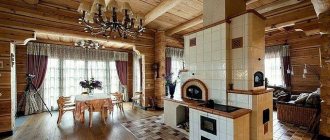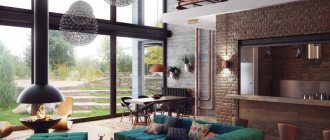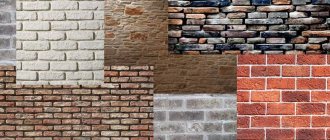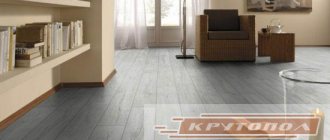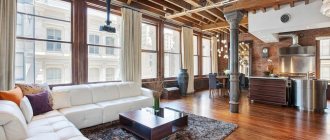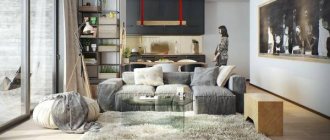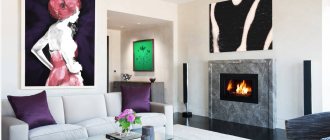Pin
Tweet
Share
Share
0 shared
First of all, Mediterranean style architecture stands out for its curved shapes in light colors. The necessity of such a background is explained by the desire to maintain coolness inside the house, which is highly valued in Mediterranean conditions.
The roof of the house is very flat, you can often even find it flat. It is usually covered with natural tiles, but metal tiles are more often used, although the concept of the style involves the use of natural materials.
Mediterranean Style House
The facade of the house is faced with natural materials, usually natural stone - sandstone, wild stone, etc. The use of natural materials allows you to maintain life-giving coolness in the house. The facade, lined with both sandstone and wild stone, looks excellent.
One of the harmonious combinations of European and Eastern trends in design is the Mediterranean style. It is interesting because the creation of a villa project in this style is aimed at maintaining coolness inside the room, which will be important in the hot summer and will serve to preserve heat in the winter.
The most popular representatives of this style in architecture are Italy, Greece, Turkey, Morocco and Spain. If you have ever been to one of these countries, you probably know firsthand about the comfort of the design of such villas, which are also distinguished by their unprecedented beauty - graceful curved shapes in light colors, an original combination of practicality, simplicity and luxurious appearance.
The main factor in the emergence of this design style is climate. Typically, such countries have very hot summers and rather mild winters. For this reason, the house is conventionally divided into two parts - sunny and shady. Also, due to the climate, a certain color scheme and finishing materials are used - the walls are usually finished with white or beige plaster, which helps to reflect the sun's rays. A common option is to use soft blue shades, symbolizing the beauty of the sea. However, the flexibility of this movement allows each country to add something authentic to this style.
The roof covering goes well with the soft shades of the walls. Most often, roofs are covered with brown, red and orange tiles, but you can often find a modern replacement - metal tiles. In a Mediterranean-style villa project, the roofs are usually sloping, flat or have a slight slope.
As for finishing materials, this style is characterized by the use of natural materials - natural stone (sandstone, wild stone, etc.), wood and ceramics. An excellent finishing option is a combination of two types of natural stone. The active use of stone is again due to the climate - stone walls and floors help keep rooms cool.
Perhaps the most characteristic and recognizable feature of a Mediterranean style villa design is the use of arches, arched doors, large windows, galleries and niches. These features allow the architecture of the Mediterranean-style villa to look ascetic and at the same time elegant.
The style itself has two main directions: Italian and Greek. Let's look at the main features.
In the Greek direction, Cycladic motifs are often used, which are characterized by snow-white walls, the absence of tiles, elementary geometric shapes, as well as blue or light blue doors and window frames. In general, cool colors and shades are used - emerald, blue, soft green and cool pink. This trend is also characterized by elements in the form of white stripes on wall and fabric surfaces; a similar detail is also present in the decor - for example, on pots.
Italian motifs in this style, although they combine the main features of classical and Greek ones, still have a slightly different character. In this direction, predominantly warm shades are used, such as bright yellow. Olive colors are also found, less often - brickwork.
A Mediterranean-style villa project, the main features of which were formed under the influence of natural factors, is an excellent option for both a summer holiday and permanent housing. The incredibly beautiful elements characteristic of this style create the impression of luxury and elegance, and the simplicity of the forms and arrangement of space make it possible to live truly comfortably.
- Back
- Forward
Mediterranean Style in Architecture
The architecture of a mansion in Italy is unthinkable without a balcony or a spacious, but always covered, terrace. The presence of these architectural elements will allow you to enjoy the coolness of the evening after a hot day. It is characterized by the presence of a patio - a courtyard with tropical fauna.
Projects of Houses and Cottages in Mediterranean Style
Mediterranean Style House Design
Imagine moving into the territory of a country house with a swimming pool, shady gazebos, and a pleasant atmosphere that evokes the sea and tranquility. A two-story house in a Mediterranean style is the dream of every traveler, dreamer and romantic. The windows here are not the usual straight shape, but with arches. There must be a fountain or a pool, which is surrounded by lush greenery and greenery in pots.
France, Cote d'Azur, Saint-Tropez | €39 million, 650 sq.m.
Another representative of the rustic (in this case, Provencal) style is sold in Saint-Tropez. Sea view - 180 degrees. What's attractive about this offer? Having 14 bedrooms in the main house, as well as a family and guest house, winter garden and swimming pool. In the interior decoration there are references to bygone centuries, to the era of the last Louis. You can get to the villa by helicopter, but you won’t be able to get to the entrance of the house by car: only golf carts can drive on the lawns - all for the sake of peace and tranquility.
Mediterranean Design
The design of the facade of a house in a Mediterranean style has the following features:
- The cladding of the house is made in light and warm shades. In warm Mediterranean countries, this is necessary to protect the premises from the scorching sun and heat.
- The roof is covered with tiles and has a slight slope.
- Traditionally, the facade of a Mediterranean house has a regular whitewash, but decorative plaster with a rough structure can be used.
- Natural or artificial stone, ceramics or mosaics, and marble slabs are used as facing materials. Decorative materials are used to decorate some areas of the wall, the top and/or bottom of the wall to create contrast.
- The presence of a balcony with wrought iron railings and arched windows is a feature of a Mediterranean house.
France, Cote d'Azur, Antibes | €40 million, 700 sq.m.
The house, designed in the style of “I wanted the best, but it turned out to be too much,” is offered for €40 million. Many lovers of combining incongruous things will certainly appreciate the interiors. Among the countless rooms there is one professional wine cellar and seven toilets. Conclusion: wine should be consumed in moderation and preferably in a group of no more than seven people.
Mediterranean Style Design
Projects of country houses in the Mediterranean style include a swimming pool, gazebos, and terraces. It is important to create harmony between the building and the surrounding nature. Naturalness, traditional charm and practicality - the concept of Mediterranean style.
Mediterranean Style Renovation
Projects of two-story houses in the Spanish style include facing the entire wall with stone masonry, and the adjacent one with plain plaster. The use of heavy materials and massive architectural solutions creates the impression of the solidity of a Spanish house.
Mediterranean Style House Project
Italian houses are decorated not only using stone and plaster, but also wood. The combination of wood and stone looks very harmonious. The presence of frescoes, mosaics, forged elements and light openwork stucco gives us the mood of a country villa in Sicily.
Italy, Sardinia, Porto Cervo | €39 million, 300 sq.m.
An ultra-fashionable high-tech villa on the seashore and near the Pevero golf courses will appeal to lovers of sensible minimalism and well-known brand phones with a bitten off piece of fruit. White, chrome and wood interior details blend perfectly with each other, and panoramic terraces overlooking the sea will allow you to while away the evening in a pleasant environment. It’s almost closer to the beach than to the pool.

